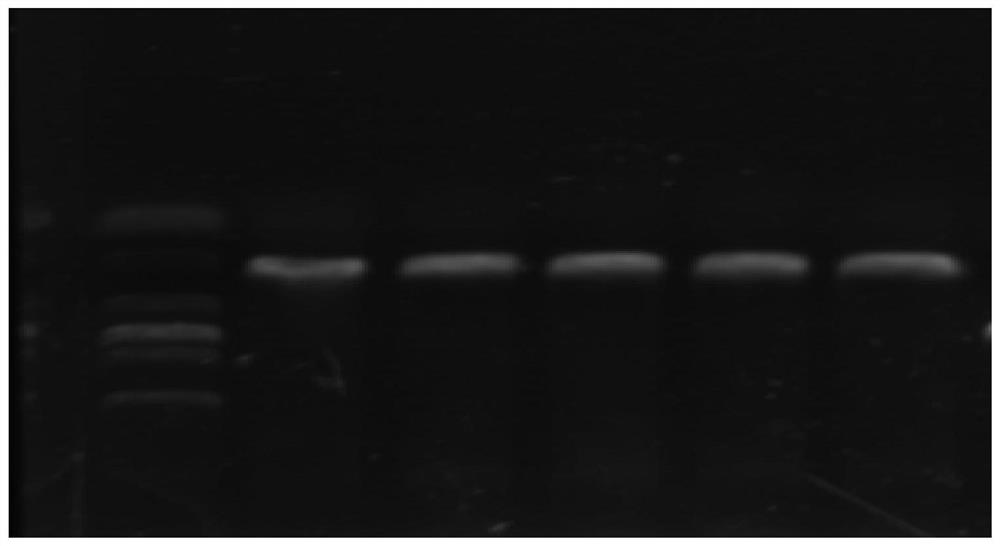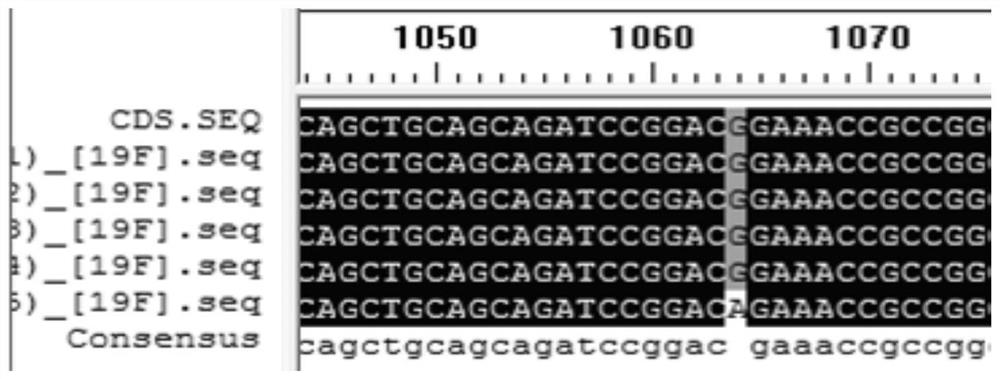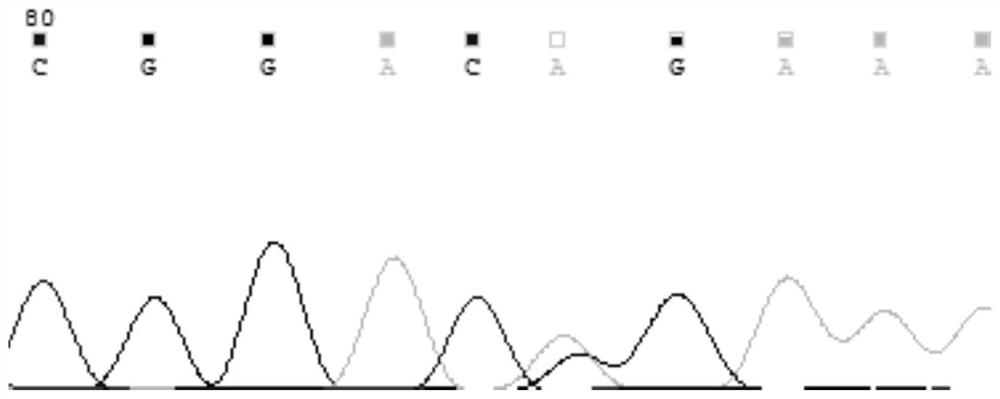Molecular marker related to wool yield of Angora rabbits and application thereof
A molecular marker, long-haired rabbit technology, applied in the determination/inspection of microorganisms, biochemical equipment and methods, DNA/RNA fragments, etc., which can solve the problems of reduced wool spinning value, low selection accuracy, and reduced textile performance.
- Summary
- Abstract
- Description
- Claims
- Application Information
AI Technical Summary
Problems solved by technology
Method used
Image
Examples
Embodiment 1
[0029] Embodiment 1, long-haired rabbit KRT26 gene mutant detection
[0030] 1. Experimental material: The present invention uses long-haired rabbits jointly cultivated by Shandong Mengyin Yida Rabbit Industry Co., Ltd. and Shandong Agricultural University as the experimental material, and the samples are 757 in total. On the 283rd day after birth (the fourth shearing), the wool was raised under uniform conditions for 73 days, and the individual hair production and fiber quality indicators were measured. Use scissors close to the skin to cut off the hair sample at the center of the body, use surgical scissors to cut a piece of ear tissue the size of a soybean grain, put the cut ear tissue into a 1.5mL centrifuge tube filled with 75% alcohol, and bring it back to the test Room, stored at -20°C, for extraction of genomic DNA. The reagents used in the experiment were purchased from companies such as TaKaRa.
[0031] 2. Experimental method: Genomic DNA was extracted from the col...
Embodiment 2
[0041] Embodiment 2, SNP typing
[0042] SNP typing was performed by flight mass spectrometry, which was completed by Beijing Compson Biotechnology Co., Ltd. The specific steps are as follows:
[0043] (1) Primer design: According to the SNP site information, use the MassARRAY company design software AssayDesignSuitev2.0 to design PCR reactions and single-base extension primers, and check the primer specificity online through UCSC.
[0044] (2) Genomic DNA quality inspection: Detect the DNA concentration, purity and degradation degree by agarose gel electrophoresis, and the test result interpretation standard: In the electrophoresis detection gel, the DNA band is single, clear, free of impurities, without dispersion and tailing .
[0045] (3) Electrophoresis conditions:
[0046] ①0.8% agarose gel, 170V, 25min
[0047] ② Loading volume: 500ng sample + 3μl Loading Buffer
[0048] ③Marker: Trans2000 Plus 3μl
[0049] (4) PCR reaction:
[0050] ①The PCR reaction system is sh...
experiment example
[0076] Experimental example, association analysis of hair yield traits and KRT26 gene in long-haired rabbits
[0077] The GLM program of SAS9.2 was used for analysis of variance, and the correlation analysis was carried out between the genotypes of polymorphic sites and the traits of hair yield in long-haired rabbits. The BLUP model is:
[0078] Y=Xb+Za+e
[0079] Y: phenotype value of hair-producing traits; X: individual number matrix related to fixed effects; b: fixed effects (SNP sites, sex effects); Z: individual number matrix of individual additive genetic effects; a: individual additive Genetic effect; e: random error; allele and genotype frequencies were calculated according to the SNPs of the KRT26 gene, and the genotypes AA, AG, and GG were obtained respectively.
[0080] Table 8 Results of association analysis between KRT26 gene and wool yield traits of long-haired rabbits
[0081]
[0082] From the data in Table 8, it can be shown that the 41844263 position of...
PUM
 Login to View More
Login to View More Abstract
Description
Claims
Application Information
 Login to View More
Login to View More - R&D
- Intellectual Property
- Life Sciences
- Materials
- Tech Scout
- Unparalleled Data Quality
- Higher Quality Content
- 60% Fewer Hallucinations
Browse by: Latest US Patents, China's latest patents, Technical Efficacy Thesaurus, Application Domain, Technology Topic, Popular Technical Reports.
© 2025 PatSnap. All rights reserved.Legal|Privacy policy|Modern Slavery Act Transparency Statement|Sitemap|About US| Contact US: help@patsnap.com



